In Windows 10, you can search for files and other content using the built-in search tool on the taskbar. However, you can also search for files directly through File Explorer. With the Windows 10 November 2019 update, Microsoft has integrated Windows Search into File Explorer. This means you can click or type a keyword in the search box and File Explorer will suggest files based on your search term. But even without this latest improvement, there’s more to File Explorer than meets the eye. Let’s look at how to use the search tool in File Explorer.
See: 20 Pro Tips to Get Windows 10 Working Your Way (Free PDF)
First, to take advantage of the Windows Search integration in File Explorer, make sure you’ve upgraded to Windows 10 November 2019 Update version 1909. Open File Explorer to a specific folder that you will apply. Click on the search field. If the functionality works, you should see a list of items from previous searches. Type a character or two and the items from previous searches match your criteria.
Press Enter to see all search results in the window. Click on the correct search result to open the corresponding document or other file.
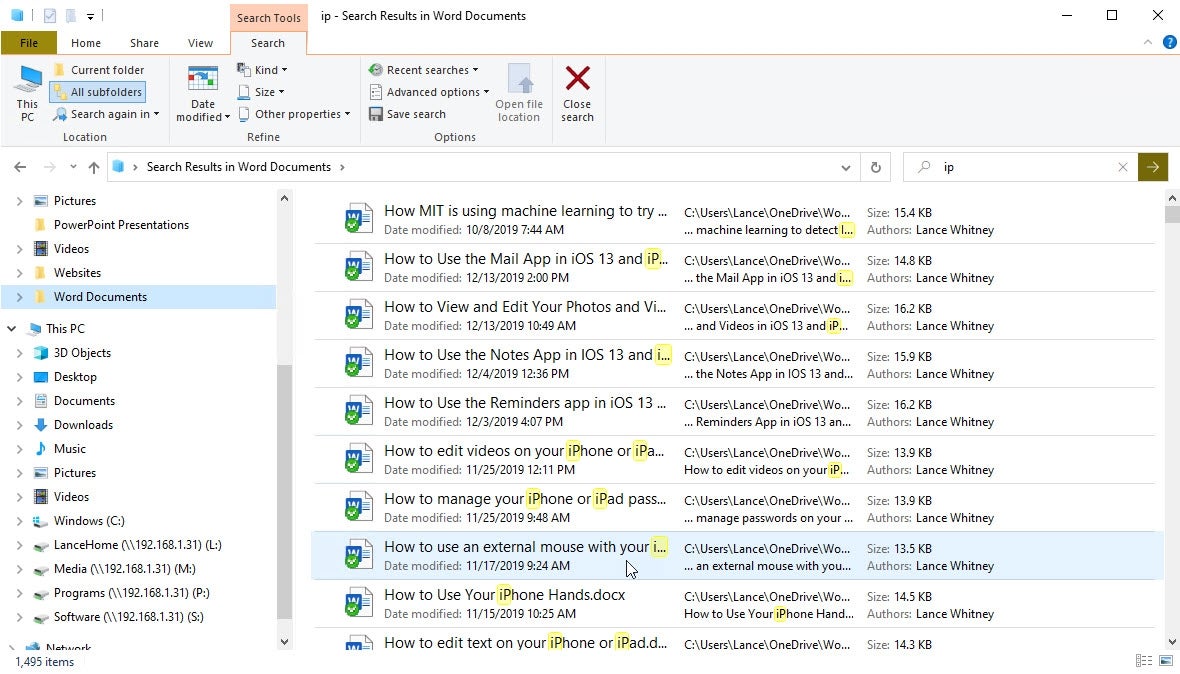
With the search ribbon in File Explorer, you can use various commands, settings and criteria to refine your searches. To expand the location of the search to the entire computer, click on the icon for this PC. To limit the location to only the current folder and no subfolders, click the icon for the current folder. To include the current folder and all subfolders, click the All Subfolders icon. To search in other locations, click the icon to search again and select a different folder.
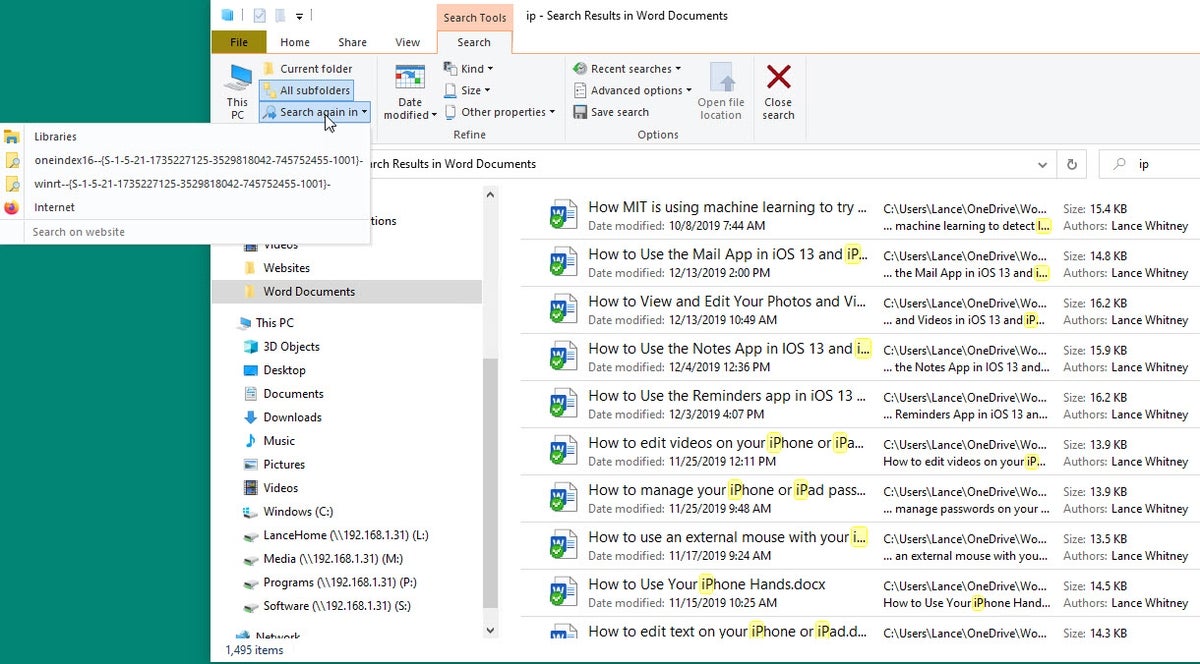
To search by date, click the date modified icon and select today, yesterday, this week, or another time frame. Click on that kind of icon and you can specify the file type you’re looking for, e.g. A document, image, video or program. Click the size icon to narrow the search to specific file sizes, such as small (16kb to 1MB), medium (1MB to 128MB), or large (128MB to 1GB).
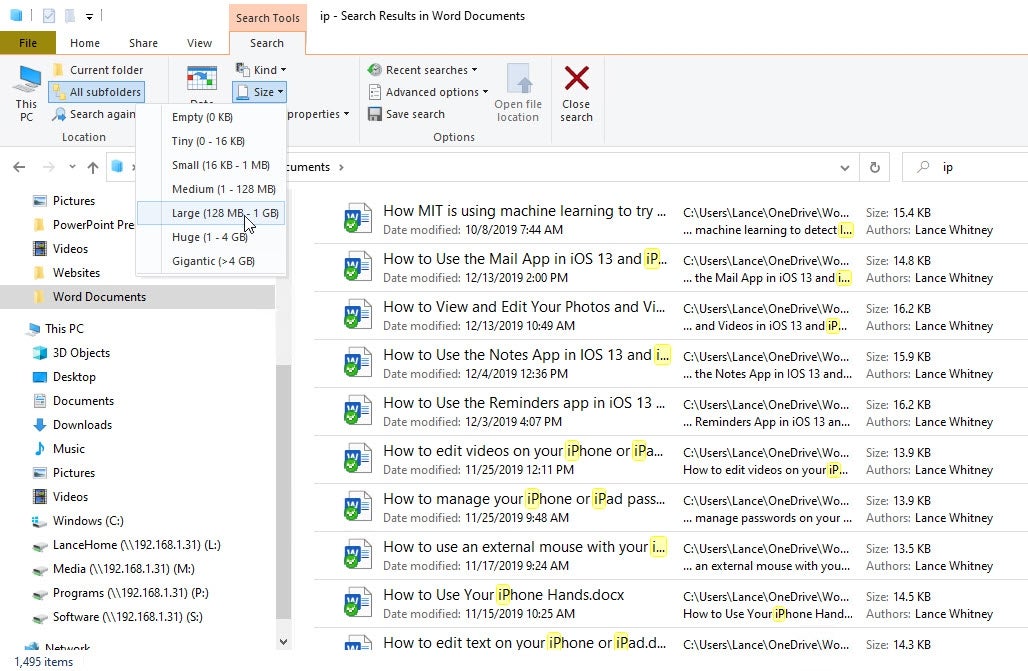
How to search for files in Windows 10
Click the icon for other properties. Then click one of the choices from the menu: Type, Name, Folder Path or Tags. In the search field after the property name and the colon, you can then type a specific value.
If you select name, you can enter a specific file name or keyword from the file name. If you select type, you can enter document or image as the specific type. If you select folder path, you can enter a specific path name. You can also add multiple properties to a single search. If you only want to see folders, use the search box and include search filters like Type: Folder.
If you want your search results to be a specific file type, add its extension to the search with an asterisk, such as *.png, *.docx, or *.pdf.
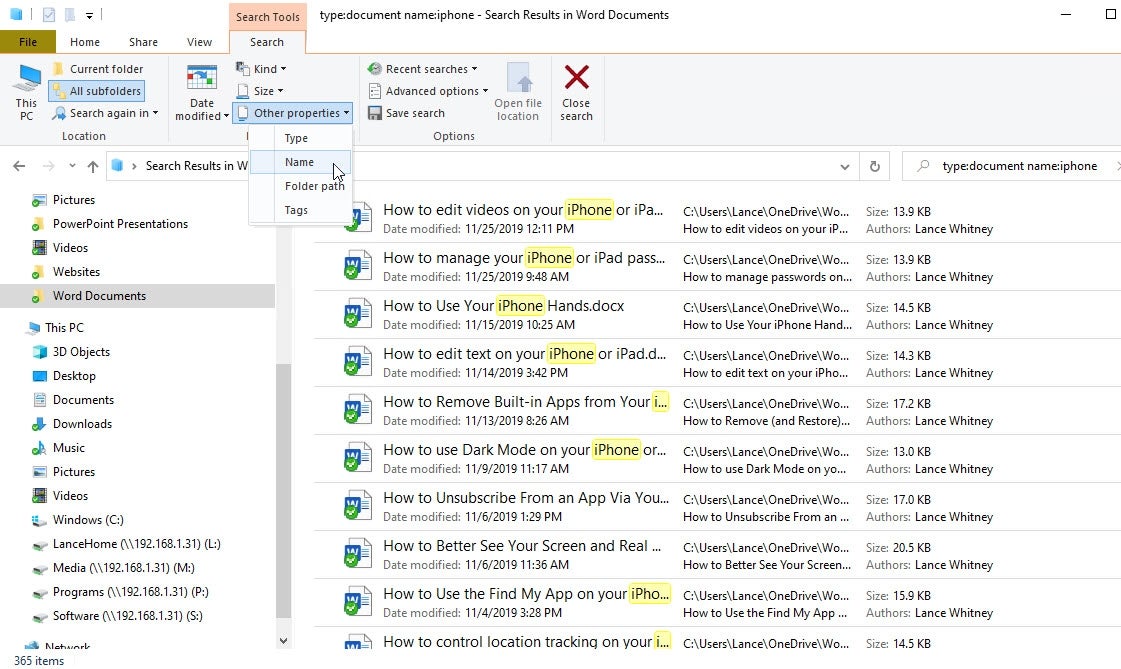
How to access previous searches
To access previous searches, click the recent searches icon and select the search you want to run again. Next, Windows indexes and looks and looks in certain places to speed up your searches, but you can change that. Click the Advanced Options icon. Click the option to change indexed locations.
From the Indexing Options window, you can add or remove locations in the index. Click Close when you’re done. Go back to advanced options. Select or deselect any of the three non-indexed locations that you want to include or exclude in your search, specifically file contents, system files, or zipped (compressed) folders.
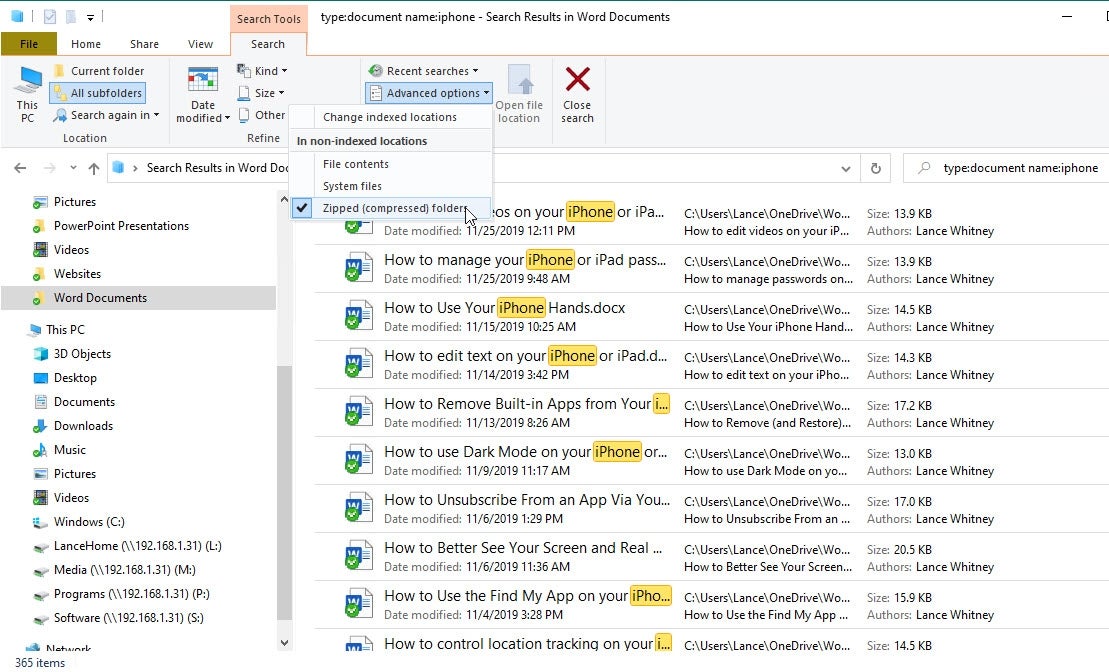
Click the icon to save search to save your current search criteria and settings to save search. Enter a name for the search or leave the default name. Keep the default location. Click Save.
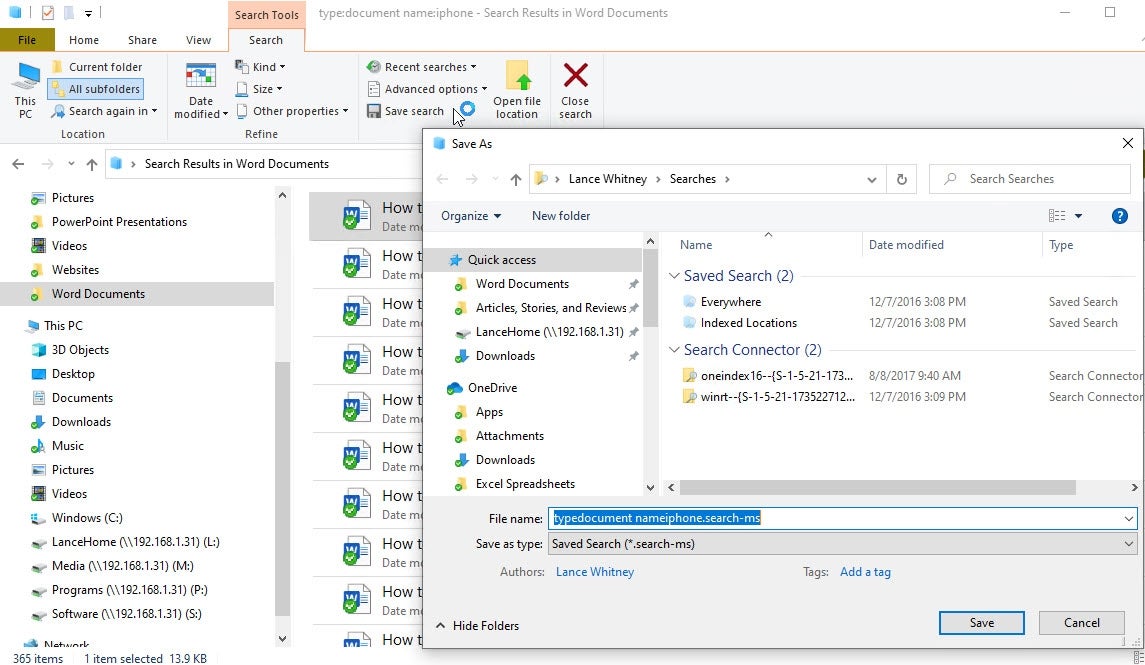
Finally, to open the entire folder for a particular file from the search results, click the file and then click the icon to open file location. When you have finished your search, click the icon to close the search.
And for Windows 11?
File Explorer in Windows 11 comes with the same search tools as described here, so a similar process can be followed to navigate it. There are some aesthetic changes, like labels added to the context menu (the one that appears when you right-click on a file or folder) icons for actions like copy, paste and delete, the ability to assign colors to folders, tabs when you open multiple folders at once and ‘favorites’ and ‘recent files’ sections.
TechRepublic has created a guide on how to search for apps, files, and other items in Windows 11. Note that Windows will end support for Windows 10 in October 2025.
Additionally, in January 2025, Microsoft began testing AI-powered search in Windows 11 for insider testers with a Copilot+ PC. The feature, which works in File Explorer and elsewhere, uses semantic indexing, meaning users can search for files using natural language. For example, you can search for photos by describing their content, even if the terms are not included in the file name. It will eventually be available to all Windows 11 users.
Fiona Jackson updated this article in January 2025.
